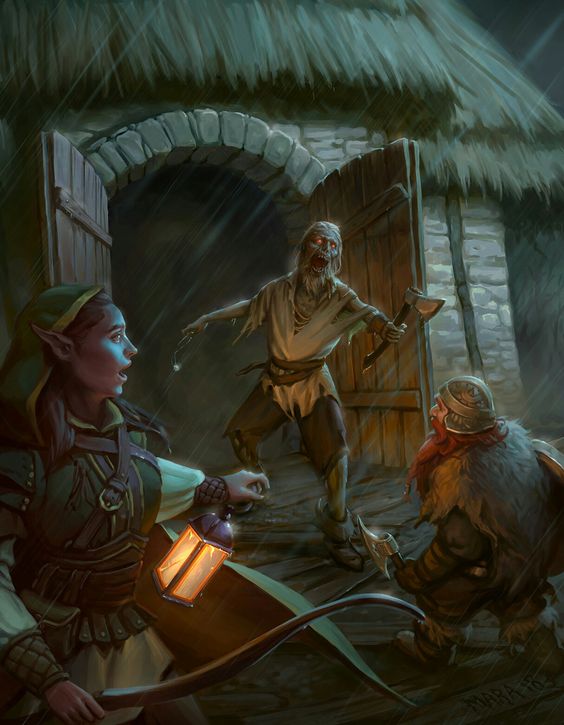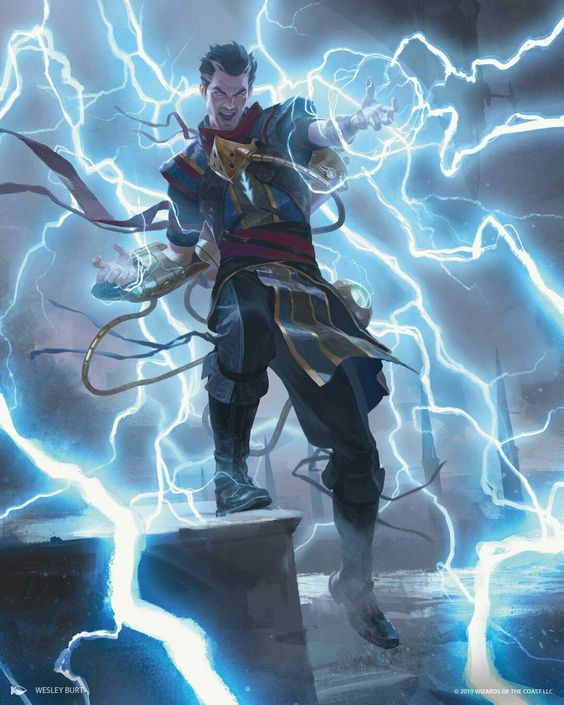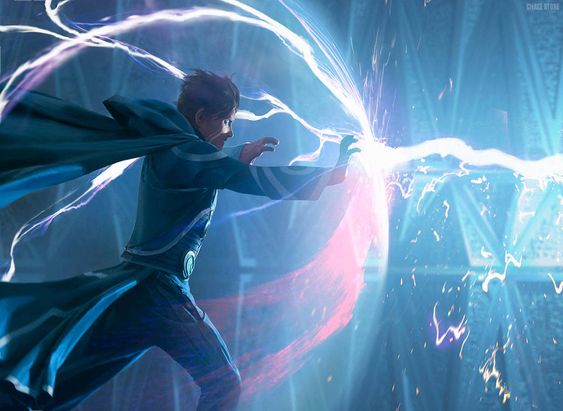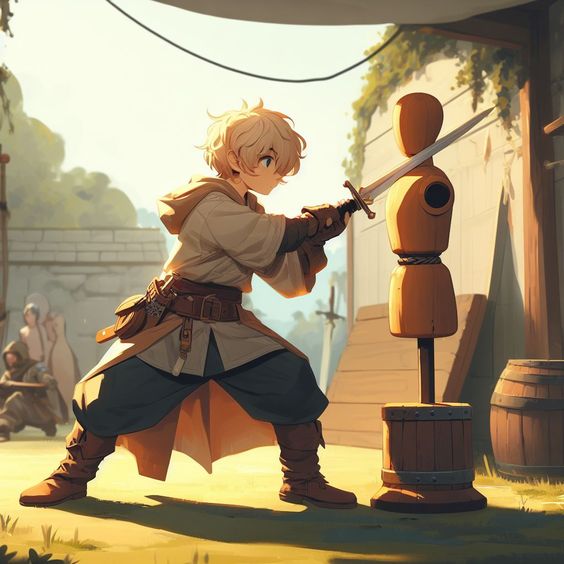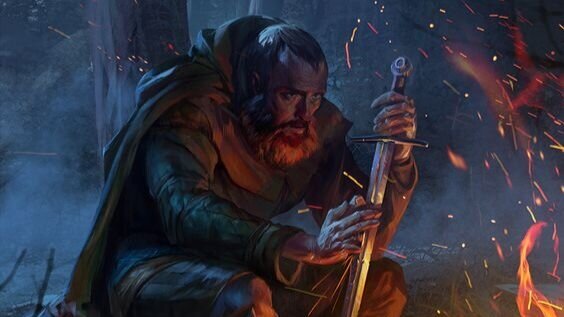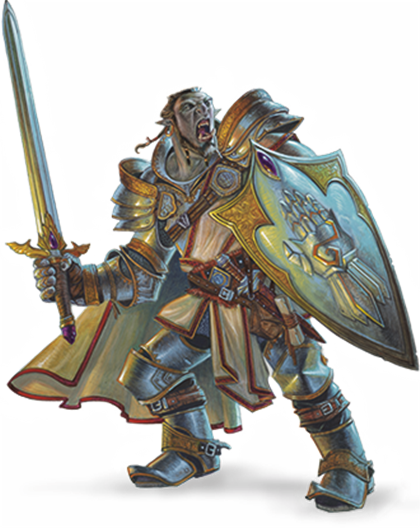D&D 5e: Don’t Put Dragons In Headlocks. A Guide To The Grappler Feat

D&D 5e: Don’t Put Dragons In Headlocks. A Guide To The Grappler Feat
SOURCE: Player’s Handbook
Rating the Benefits of Grappler
Benefit #1 –
Advantage on attack rolls against creatures you are grappling
Gaining advantage is a strong effect, especially on a condition that’s as easy to apply as grappling.
Benefit #2 –
When grappling a creature, you can spend an action to pin the creature, restraining both the creature and yourself
A creature that is restrained can’t move, has disadvantage on all its attacks, every attack against them has advantage, and they have disadvantage on Dex saves.
This is a massive list of crippling debuffs. This feature would be incredible… if it didn’t also restrain the character using it.
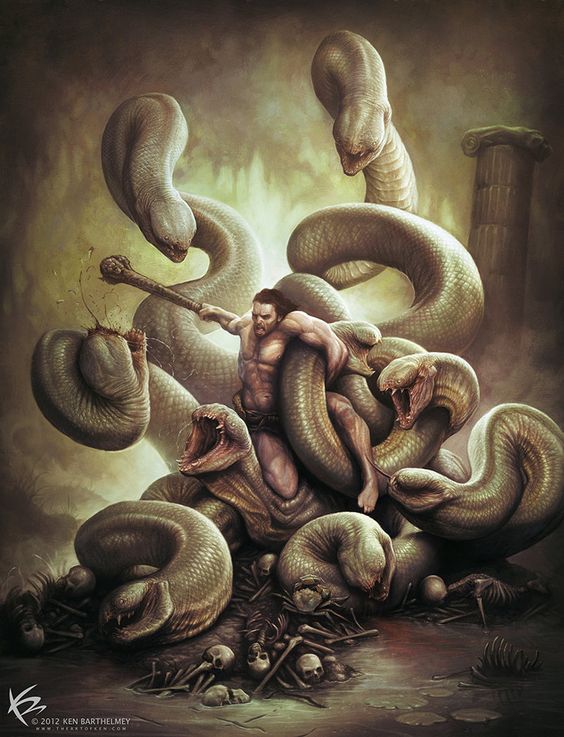
Mechanics and Requirements
Understanding How It Functions
The Grappler feat does two main things.
1) It lets a character attack any creature that they have grappled with advantage.
This is a solid bonus, especially considering a character can spend a single attack roll to make a grapple attempt. An optimized character might be able to make 3 attacks per round, every round from level 5. This means opening the combat by spending one of those both applies a condition to an enemy that prevents them from moving and allows the character to pile on damage against them.
Despite the character’s attack sequence being set back by the necessity of having to land a grapple against an enemy, this is a solidly powerful ability that adds a chunk of reliable power to a grapple-focused build.
2) The Grappler feat lets a character spend an action to pin a creature they have already grappled with, applying the restrained condition to that creature and also to themselves.
This is awful. Appallingly bad. As in, in most situations, using the action to pin the creature is actively worse than doing anything else.
The problems are threefold:
- To pin the creature takes an action, and the creature already has to be grappled. Save for an incredibly specific build using a Fighter’s Action Surge ability, this means that the ability can only be used, at minimum, in the second round of combat. Your character is spending two turns doing nothing except holding the enemy really really tightly.
- The pin ability applies the restrained condition to the creature you are pinning, and also to you. If there are any other hostile creatures in the encounter, nothing stops them from waltzing over to your now immobile, defenseless body and kicking you in the side of the head.
Worse still, pretty much everything the restrained condition does can be applied by shoving a creature prone. Which doesn’t take an action, and also, more importantly, doesn’t harm the character using it.
This part of the feat is legitimately terribly designed, and it’s a big factor in why no one should take the Grappler feat. More on this, as well as the Shove action, later in the guide.
Key Stats
The Grappler feat offers no stat boosts for a character. This is important because the Athletics checks that dictate every single part of a grapple check build from Strength. A character looking to maximize their grapple prowess needs to max Strength as quickly as possible.
Ideal Characters for Grappler
Top Classes
Fighter – Access to every fighting style in the game plus more feats than any other class allows a Fighter to assemble the necessary pieces of the grappling puzzle fast. Then add Action Surge, which essentially lets the Fighter take a double turn, grappling and shoving an enemy prone before proceeding with the beatings.
Battlemasters are the most powerful subclass for grappling. Once they have an enemy where they want them, they can apply conditions that ensure no one is ever getting out alive.
Amusingly, Echo Knights make fantastic grapplers for one reason: They can summon their shadow clone while grappling, pinning one enemy in place while their magical tag-team partner carries on the fight elsewhere.
Artificer – Artificers can make for surprisingly effective grapplers, gluing all of the necessary magic into a surprisingly tough body.
We’d probably lean Armorer subclass, turning into a literal walking tank that bludgeons enemies unconscious with lightning fists when it’s not piledriving them through tables with alchemically powered jetpack assisted leaps.
Barbarian – Every Barbarian has access to Rage, which automatically gives the class advantage on all Strength checks, including Athletics.
Barbarians also gain damage resistance, have a huge pile of HP, and a natural damage steroid, all of which combine into something approaching mathematical perfection. Path of the Beast is our choice of subclass; turning the body of the character itself into a literal weapon of savage perfection.
Druid – Are you a Moon Druid? If yes, continue. If not, look elsewhere.
The Wild Shape of a Druid is exceptionally good at grappling. High base Strength, attacks with built-in grapple or prone conditions, and a big pile of HP to tank the inevitable counterattacks combine to make an incredibly powerful grappling engine. An angry bear rampaging around and throwing enemies to the floor can end many encounters instantly, especially at low levels.
Multiclassing Considerations
Bard – Access to Enhance Ability, Bardic Inspiration, and Expertise in skills are all things that make an effective grappler. Several Bard levels glued onto any martial chassis is a simple way to make a strong, powerful wrestler.
Rogue – One level. One level gets you Expertise, some skills, and 1d6 Sneak Attack dice. Take a leaf out of the Rogue’s book. Steal everything you want, then run, and don’t look back.
Race or Subrace Choices
Variant Human – Grappling is feat intensive. Gaining an extra feat and an early start helps a character stay level with the rest of the party when it comes to stats and ASIs.
Goliath – A boost to carrying capacity is huge when grappling, as is automatic proficiency in Athletics, and a per-rest damage reduction ability.
Dragonborn – Grapple focused characters tend to suffer when it comes to hordes of low HP enemies. Being able to spit a wave of fire helps with that.
Combos, Tactics, and Synergies
Complementary Feats
Tavern Brawler – Make a grapple or a shove check as a bonus action after making an unarmed attack or attacking with an improvised weapon. If your dream is to grapple a dragon after hitting it with a chair, this is the only way to do it.
Skill Expert – Expertise is probably the single biggest bonus to any skill in the game, Athletics included. The Expertise ability is only natively available in a limited number of classes, none of them the martial characters who really want it.
Spells that Synergize
Enhance Ability – Flat advantage on all Strength checks, including Athletics rolls, for an entire hour. On top of this, Enhance Ability has another 5 flexible buffs that can be laid down onto other party members where needed, including toughness boosts and out-of-combat skill check bonuses.
Silvery Barbs – Choose an enemy and force them to reroll a dice, for example, a really good Athletics check to avoid a grapple. Then give advantage to an ally’s rolls, all as a reaction. Silvery Barbs is an incredibly powerful spell that can utterly shut down an enemy’s ability to do anything.
Strategies for Maximizing Grappler Effectiveness
So, we’ve already touched on how the Grappler feat doesn’t give a character what they need to become the next WWE world champion. How ‘bout we actually go through what it takes to win the belt when the Red Dragon’s theme music starts playing?
Expertise
Skill checks in 5e tend to stay within a controlled range, referred to by the game designers as bounded accuracy.
On top of this, the difference in skills and stats for characters is far less than it used to be. In 3.5e, for example, creatures more than 5 levels apart couldn’t meaningfully interact. As in, the lower level character probably couldn’t land a single hit on the higher level creature.
In 5e, that’s far less of an issue. Especially for characters that choose to specialize.
Bounded accuracy runs roughly in line with two things: A character’s proficiency bonus, which increases at fixed level points, and a character’s stats, which can be increased every 4 levels, but are expected to be within certain thresholds.
The Expertise ability ignores all of these expectations, probably while skipping away laughing.
Put simply, Expertise doubles a character’s proficiency bonus in a skill, utterly breaking the bounded accuracy expectations, and massively increasing the chance of succeeding.
It’s hard to overstate how big a deal this is. At level 1, it’s a +2 bonus, which adds 10% to any real chance of success. At level 17, it’s +30% over expected success rates.
Grappling is an Athletics check. Many creatures aren’t expected to have proficiency in Athletics, meaning the only bonus they add to the roll is their flat ability score modifier. Now, your wrestler is adding double their proficiency to the roll. Let’s illustrate this:
An Ogre has 19 Str, and no proficiency in Athletics. Their bonus to an Athletics check is +4.
A level 2 character with 16 Strength, proficiency, and Expertise in Athletics has +7 to their roll.
Any character who wants to be the best at a skill needs Expertise in it. This includes grapplers, who should be trying to pick up Expertise in the first few levels of their build, where it will be most effective. Methods include:
- 1 level of Rogue
- 3 levels of Bard
- The Skill Expert feat
Advantage
Next on the list is advantage.
5e is a game of chance, and you can guarantee playing the odds means you lose at the worst time.
Advantage fixes that while giving a character a major boost when it comes to success; letting a character roll two dice for an attack roll, save, or the reason we’re here, a skill check.
Rolling 1d20 results in a flat distribution. You’re equally as likely to get any result: 1 in 20.
But rolling 2 dice normalizes that distribution. Any low rolls are likely to be canceled out by a medium or high roll on the other dice. What are the chances of rolling a 1 on both dice? 1 in 400.
There are dozens of ways to gain advantage on Athletics checks in 5e. Class abilities like Barbarian Rage, spells like Enhance Ability, and the Help action.
Inversely, applying disadvantage to an enemy makes it much less likely that they’ll get a good roll on their check.
Advantage is especially strong when combined with Expertise, described above. The stacking benefits actually multiply the effect of each bonus, until success is all but guaranteed.
Prone
While it’s not a direct benefit to the roll, going over the benefits of the prone condition is an absolute necessity when we talk about grappling.
Pushing a character prone takes the Shove action, and requires an Athletics check. A Shove can be done instead of an attack while taking the attack action. All of this is exactly the same as a grapple check, meaning a character that’s fantastic at grappling is equally as good at knocking creatures prone.
A prone character has disadvantage on all of their attack rolls and all attack rolls against them have advantage. These are already a powerful set of conditions to apply to a creature, which makes killing them that much simpler.
But the important thing is this. A prone character has to spend half their movement to stand. And a grappled character has a speed of 0.
This means a character that is grappled and prone cannot stand up until they break the grapple. Which, if you’ve stacked your bonuses correctly, probably isn’t going to happen.
It’s also darkly hilarious that shoving a creature prone makes all attacks against them have advantage. Which, y’know, is supposed to be one of the big benefits of the grappler feat. Except this way has no downsides.
Shoving a creature prone is better than this entire feat. Sad, but true.
Size
Lastly, size is a serious restriction when grappling.
A creature cannot grapple with anything more than one size larger than themselves. So, a standard humanoid could grapple a Large sized Ogre, but not a Huge Giant.
This sadly locks small races out of being effective grapplers and means that, for characters who dream of putting dragons in chokeholds, finding a way to increase their own size is a serious consideration.
Options include:
- The Enlarge/Reduce spell
- The Rune Knight Fighter subclass
- The Path of the Giant Barbarian subclass
- The Polymorph spell
- The Druid’s Wild Shape
Final Thoughts on Grappler
Grappler is a bad feat. It offers nothing a grappling build really wants, ie, no way to get better at grappling, and no way to solve the main problems every grappler faces.
As we said in the grappling strategy section, a character considering this feat would be much better suited to grabbing a way to boost their Athletics check or finding a way to get advantage on checks. Both of these things will make a character much more effective at what they’re actually trying to do.


